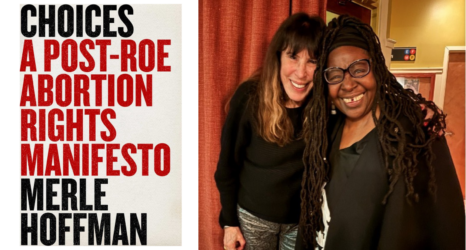It all comes down to sex: who should have it, when, and with whom.
The Girls Not Brides global member meeting in Kuala Lumpur, Malaysia was an uplifting reminder of rising global recognition of the problem of child marriage. An enormously diverse group of young people and older adults, grassroots activists, religious leaders, academics, policymakers, researchers and others came together there to end the practice—working from every angle, with every group, in many locations.
Sexuality emerged as an important theme of the meeting. World YWCA General Secretary Nyaradzayi Gumbondzvanda plunged right in during the opening plenary, calling on the assembled to avoid tinkering with patriarchy and to go to the heart of the matter: the control and abuse of girls in the name of culture. Her message was echoed by Anne-Birgitte Albrectsen, CEO of Plan International, who called out the world’s “deep obsession with girls’ sexuality” as an obstacle to ending the practice of child marriage.
It was in a session age at marriage and age at consent to sex that the fault line the field is struggling with came into focus. There is no systematic relationship between age at consent to sex and age at marriage in countries’ laws around the world. Legal age at marriage ranges from 12 to 21 legal age at marriage—most countries have set 18 as the minimum—but parental exceptions permit marriage at virtually any age.
One thing is for certain: Everyone agrees that child marriage is a problem, since children should not be taking on a lifetime commitment before they are ready. But as age at marriage increases around the world, we will see more adolescents having sex independent of marriage.
Any discussion of this reality reveals divergent framings of the problem. Some people believe adolescent sex is the problem, as adolescents are children and should not be having sex before age 18. Some people believe non-reproductive sex is the problem, and that it is immoral for young people in particular to be having “recreational sex,” particularly outside of marriage. Some people believe that adolescents should be able to engage in sexual relations that are consensual and pleasurable. Some people believe marriage itself is the problem, as it systematizes the subordination of women in relation to men.
Is there some way that common ground could be built around a positive approach to adolescent sexuality?
WEB Du Bois once wrote: “A system cannot fail those it was never meant to protect.” He was speaking, of course, of the color line, and racism in the United States—but his brilliant words are just as relevant to the ways that patriarchy and ageism structure adult mishandling of young people’s sexual lives.
The system of expectations for boys’ and girls’ and men’s and women’s sexual behavior causes harm to girls and women, and to young people; in this system, ideas about sexuality actually perpetuate the problems we are trying to fix.
Between the age hierarchy that makes adolescents subordinate to adults and prevents them from getting access to information, services and supports, and the patriarchal hierarchy that makes girls subordinate to boys and men and vulnerable to coercion or limits their alternatives, we can foresee the “crashes” young people encounter in their sexual lives. Yet we are continually bemoaning the individual missteps that occur within a system that sets adolescents up for failure.
“Crashes” in the arena of adolescent sexual behavior are highly predictable on the basis of the information and services they have access to, their communication skills, the respect boys and girls have for each other, the willingness of their parents to discuss sexual relationships with them, their ability to make decisions and how they see their future prospects. Consent education is needed at schools—not just for sex, but for borrowing a pencil, taking a photo and so on.
Even where comprehensive sexuality education is highlighted, teachers skip the sexuality and consent parts they are uneasy with; they lack proper training and skills to convey adolescent-friendly skills and information that is free of stigma. Other professionals are similarly constrained: the firm developing an Android app for SERAC on menstrual regulation quit in the middle of the project because of their discomfort with the information provided by their own tool. Strict religious or cultural views make it hard for people to talk about sex.
Child marriage and other early sexual relationships “embody” girls’ subordination to boys and men—with the physical experiences of sex with much older partners, sexual coercion, a lack of information, unintended pregnancy and so on reflecting male/patriarchal control of girls’ and women’s bodies and their sexuality. If we recognize how important sexuality is to ending child marriage, we have to be working systematically with men and boys. They are key players in a system of relations that subjugate women and girls, and ending child marriage requires their full engagement.
Promoting good health and ending child marriage require decisions about sexual behavior to be made with the information, services and education, and the power, necessary to make sex and reproduction safe, pleasurable and at a time of one’s own choosing. It also requires intergenerational dialogue and the development and reinforcement of supportive community norms and supportive institutions.
As sexual and reproductive health and rights advocate Chelsea Ricker has said: “If sexuality is not something to fear, then societies do not need child marriage to ‘fix’ it.”





